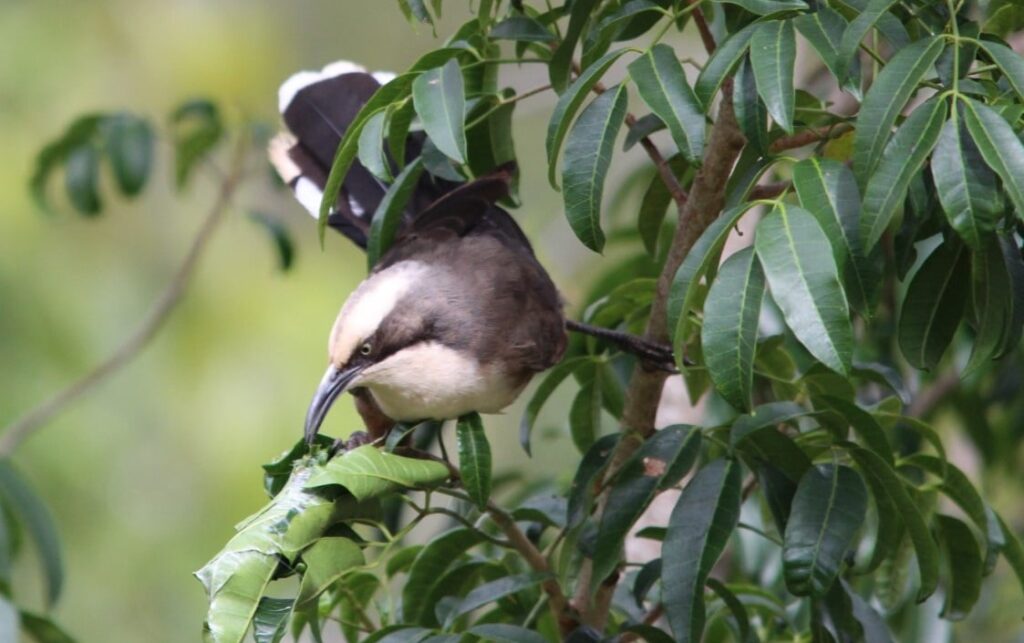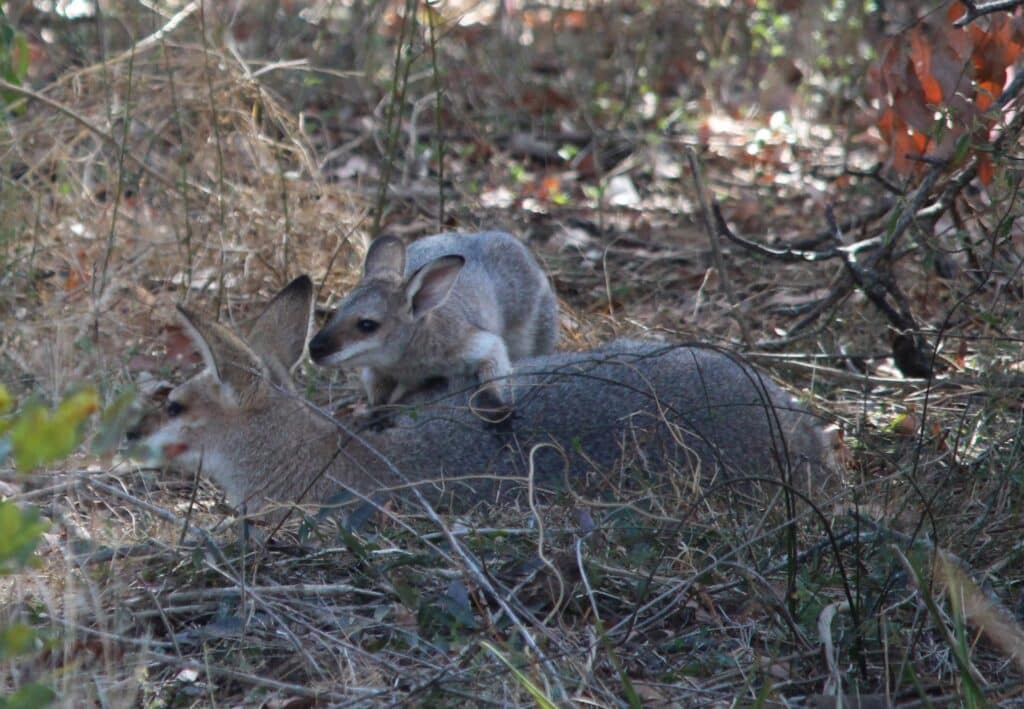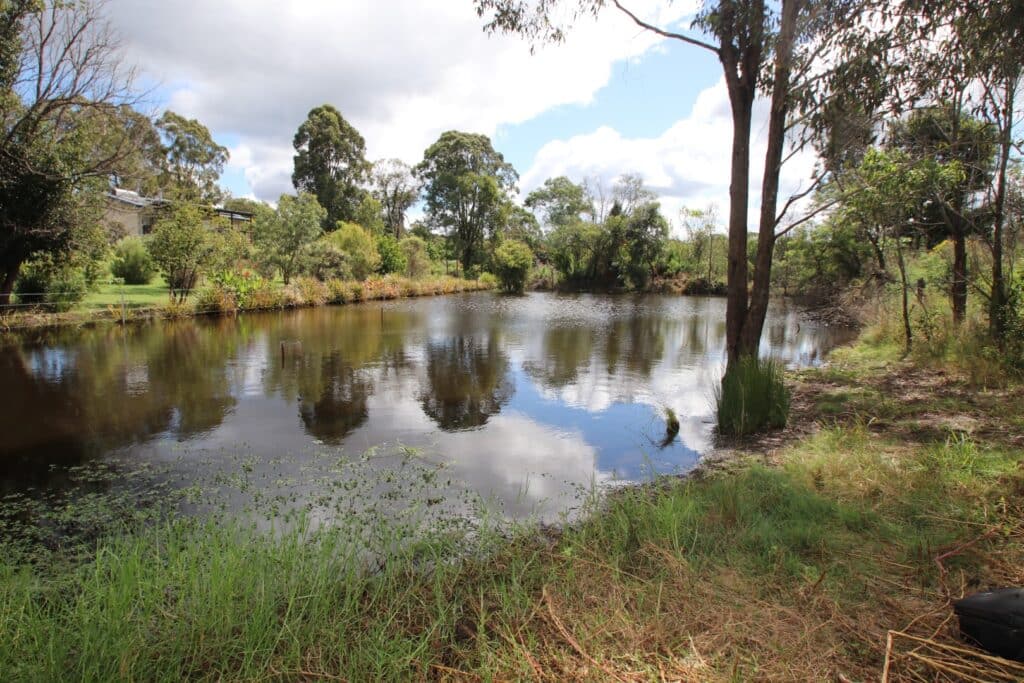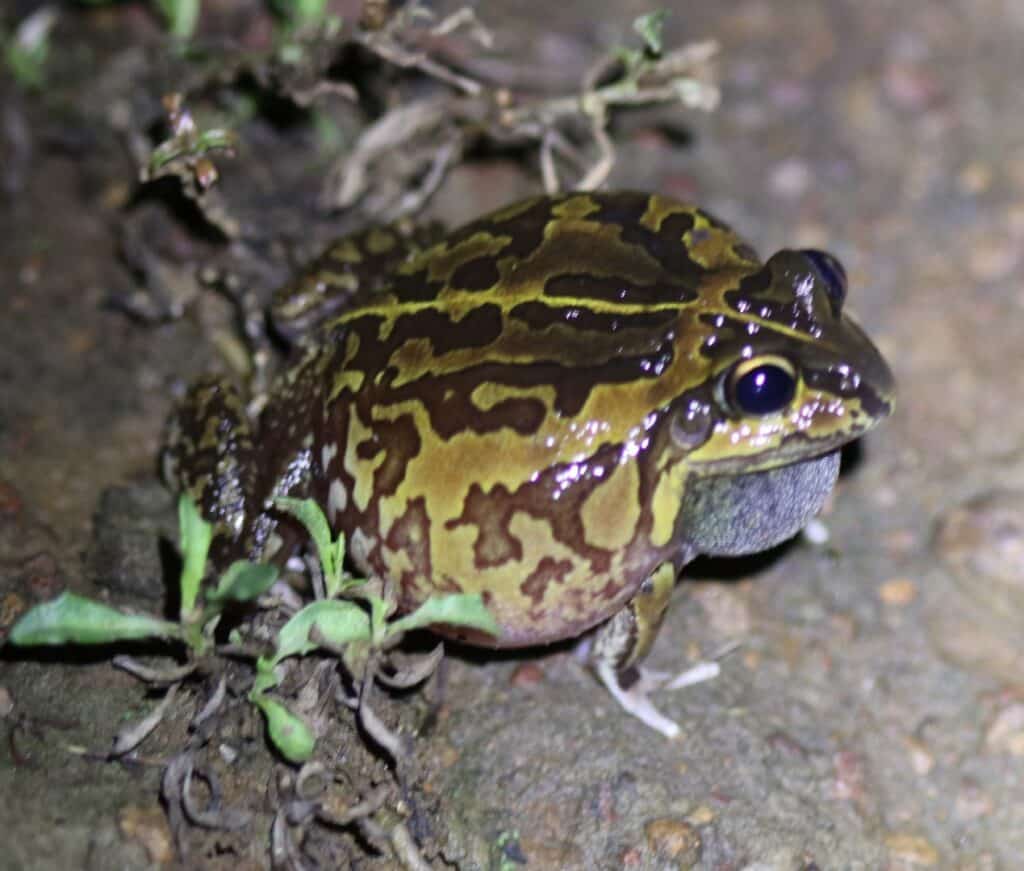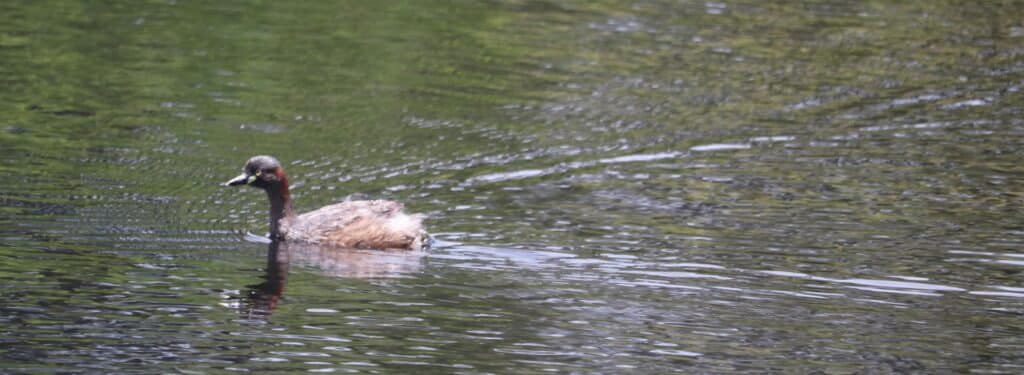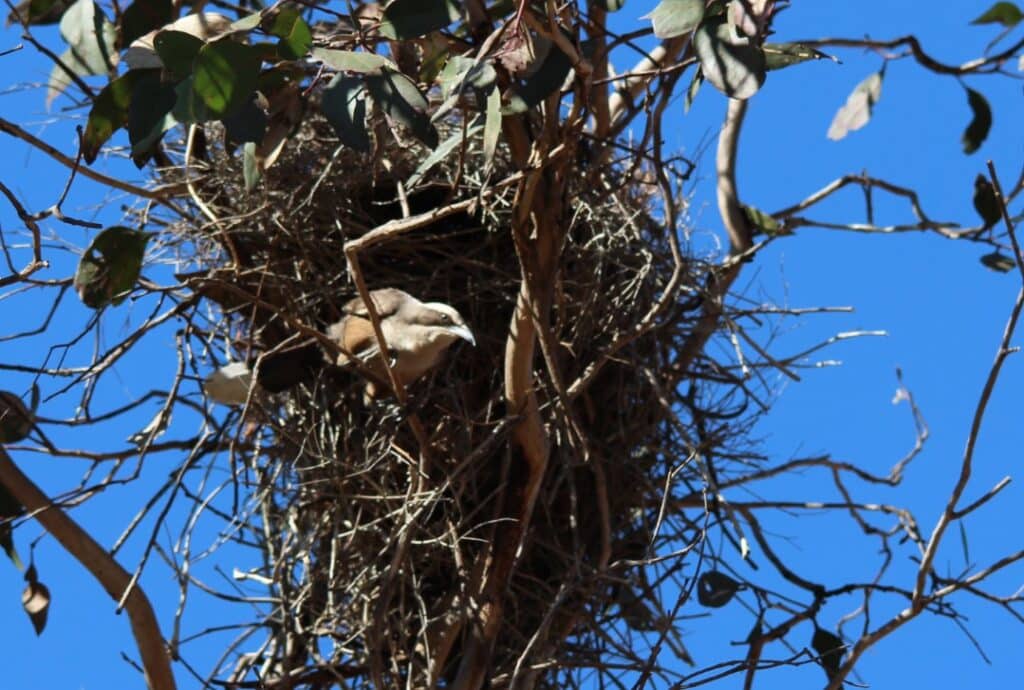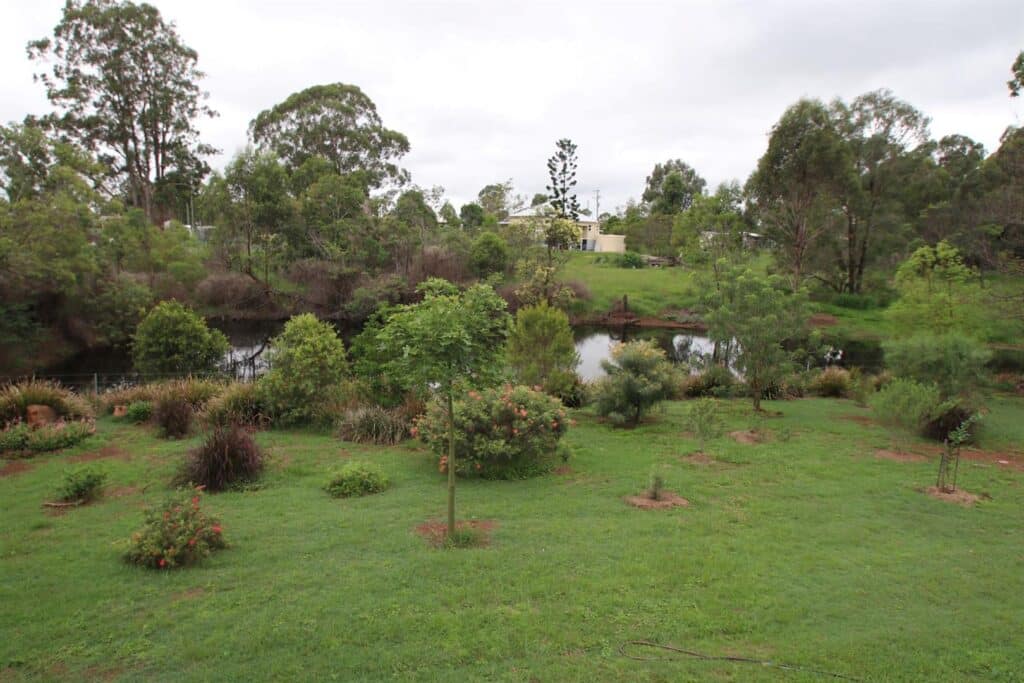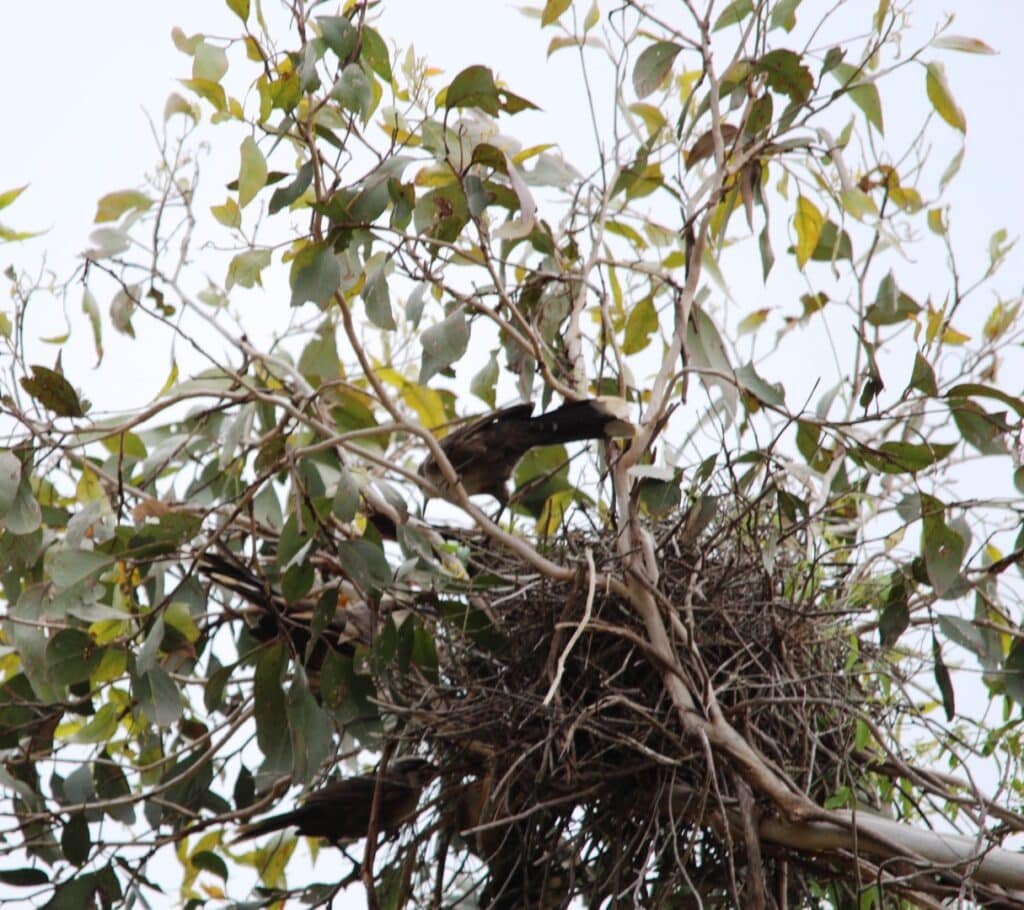Scott and Susan Reilly are the owners of Babbler Cottage, a property situated in Yarraman, approximately 100km north of Toowoomba, Queensland. The property is a home and dedicated wildlife sanctuary, also used for bush regeneration and education. Scott and Susan intend to live on this property for the rest of their lives and hope to enhance the vegetation for native species by conserving native plants and removing pest species.
Babbler Cottage spans 0.89 hectares of former grazing land. The block forms a drainage line from Pidna National Park and State Forest which runs through a dam and into Yarraman Creek. Vegetation is comprised of grassy woodland dominated by gum-topped box (Eucalyptus moluccana), narrow-leaved ironbark (E. crebra), Yarraman ironbark (E.melanoleuca), spotted gum (Corymbia citriodora variegata), black wattle (Acacia concurrens) and Kingaroy wattle (A. glaucocarpa).
A wide range of wildlife is present including red-necked wallabies (Macropus rufogriseus), brushtail possums (Trichosurus vulpecula), northern brown (Isoodon macrourus) and long-nosed (Perameles nasuta) bandicoots, microbats, red-bellied black snakes (Pseudechis porphyriacus), eastern brown snakes (Pseudonaja textilis), legless lizards, eastern bearded dragons (Pogona barbata), nobbi dragons (Diporiphora nobbi) and abundant frogs, skinks and geckos. The property is also home to butterflies, dragonflies and yabbies as well as other freshwater invertebrates.
An array of native birdlife is also present including laughing kookaburras (Dacelo novaeguineae), collared sparrowhawks (Accipiter cirrocephalus), azure kingfishers (Alcedo azurea), southern boobooks (Ninox boobook), channel-billed cuckoos (Scythrops novaehollandiae), black-faced cuckooshrikes (Coracina novaehollandiae), mistletoebirds (Dicaeum hirundinaceum), eastern koels (Eudynamys orientalis), fantails, grey butcherbirds (Cracticus torquatus), white-winged choughs (Corcorax melanorhamphos), apostlebirds (Struthidea cinerea), scaly-breasted (Trichoglossus chlorolepidotus) and rainbow lorikeets (Trichoglossus moluccanus), buff-banded rails (Gallirallus philippensis), grey-crowned babblers (Pomatostomus temporalis), regent (Sericulus chrysocephalus) and satin (Ptilonorhynchus violaceus) bowerbirds, pale-headed rosellas (Platycercus adscitus), olive-backed orioles (Oriolus sagittatus), superb fairy-wrens (Malurus cyaneus), little (Philemon citreogularis) and noisy (Philemon corniculatus) friarbirds, peaceful doves (Geopelia placida), brown cuckoo (Macropygia phasianella) and bar-shouldered (Geopelia humeralis) doves, white-headed pigeons (Columba leucomela), red-winged (Aprosmictus erythropterus) and king (Alisterus scapularis) parrots, striated pardalotes (Pardalotus striatus), yellow-rumped thornbills (Acanthiza chrysorrhoa), yellow-faced (Lichenostomus chrysops), blue-faced (Entomyzon cyanotis) and scarlet (Myzomela sanguinolenta) honeyeaters and yellow (Zanda funerea) and red-tailed (Calyptorhynchus banksii) black cockatoos.
The waterways are home to Australasian grebes (Tachybaptus novaehollandiae), pacific black (Anas superciliosa) and Australian wood (Chenonetta jubata) ducks, plumed whistling ducks (Dendrocygna eytoni) and yellow-billed spoonbills (Platalea flavipes).

